 |
||||||||||||||||||||||||
 |
 |
|||||||||||||||||||||||
 |
||||||||||||||||||||||||
 |
 |
 |
 |
|||||||||||||||||||||
| 2015 CIRCLES | 2014 CIRCLES | 2013 CIRCLES | 2012 CIRCLES | |||||||||||||||||||||
|
||||||||||||||||||||||||
 |
 |
|||||||||||||||||||||||

|
Garsington, Oxfordshire, 03/05/05Having realised that I was actually right next to this crop circle last week, although I didn't know it at the time, I decided to go back and have a look. Leaving Brighton the weather was promising and I expected to be able to get some good shots from the pole, knowing that the crop circle was small enough to photograph reasonably well. The weather, as it turned out, was to play a significant role! 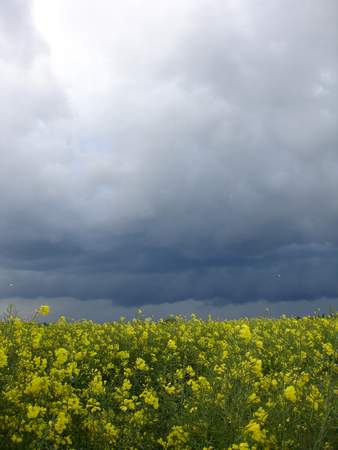
On entering the field, I quickly got stuck in the standing crop! With the flowers starting to die off and the crop at full height, it was very difficult to see where the tram lines were, let alone follow them. The crop was already beginning to merge together, and where there would have been a gap above the tram lines, it had become tangled and very difficult to walk through. The result was that I had to get down on my hands and knees and actually crawl uphill along the tramline (these are the lengths we go to to bring you these reports!). As it had been raining for some of the morning, this was also a rather wet experience and I was very glad to see the light at the end of the tunnel, literally! This crop circle is positioned on the crest of a small hill, a location affording an excellent view of the surrounding area, but with the added, and unusual result that the formation itself cannot be seen from anywhere on the ground. Walking into the outer pathway of the crop circle, the laid crop seemed to be in fairly good condition. As I walked around the perimeter, there were many places where it appeared to follow the direction of the narrow pathway, bending as it did so. The crop was also quite springy underfoot, not so much as a result of re-growth, of which there was not a huge amount, but seeming more like it had not been laid very firmly to the ground to begin with. The number of visitors to this crop circle must be limited, not least because of the hidden location, which could account for the springiness of the crop to a certain extent. 
The width of the outer ring is fairly uniform, measuring 6ft across. The pathways which form the spiral pattern of the formation vary in width, from 6ft in some places, to 8ft in others, even increasing to around 10ft in some areas. The diameter of the central laid circle is 13ft. It was not possible to measure the diameter of the entire crop circle due to the height of the standing crop, but I would estimate it to be approximately 150ft. The crop is laid clockwise throughout. On the eastern side of the circle, there are two pathways linking one section of the spiral to the other. At these points the crop is laid so lightly that it is impossible to walk through. These gaps appear as though they could have been caused by the weather, or the crop toppling over as it has reached full height. However, the laid crop from the spiral pathway actually flows into these gaps, indicating that they are a part of the original design. They can clearly be seen from the aerial photos. 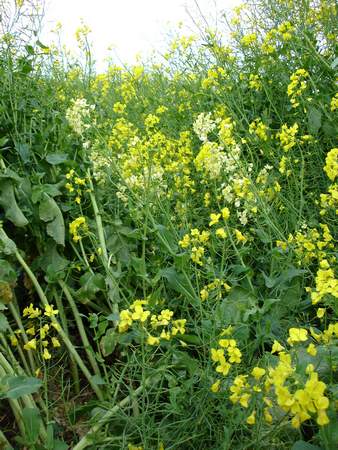
As well as these pathways being aligned to the east, the oak tree at the edge of the field also lies ENE of the formation. This is the third crop circle I have visited in a row where an alignment of west to east is present, the others being Toot Baldon and Bishopís Sutton. Whether this is significant or not, I donít know, but it is a feature none the less. 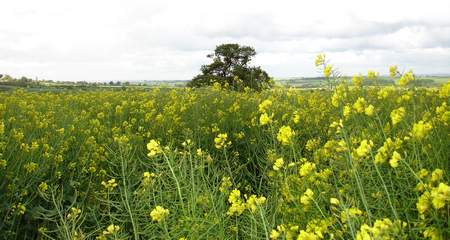
To get to the centre of the formation I had to walk against the flow of the crop due to the fact that both the flow and the direction of the spiral pattern follow a clockwise direction. Walking towards the centre I became very disorientated, and confused as to whether or not I was going the right way. Had it not been for the fact that I had studied the design before entering it, I would have turned back on more than one occasion. The height of the standing crop does play a part in that it is impossible to see the rest of the design, but my confusion seemed more significant than that alone. 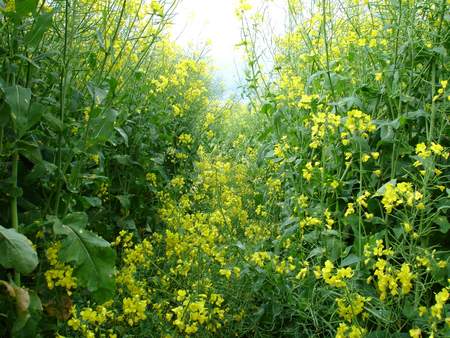
On reaching the central circle, I discovered an area of completely bare earth at the centre, measuring about 1ft in diameter. This was not trampled and muddy like we saw in the Ripley formation a few weeks earlier, but simply an area with no plants growing in it. The soil looked fresh, and there was also a small divot which looked to have been caused by a plant being pulled up. Next to it was a small clod of earth about the same size as the divot itself. The removed plant, if that is what had happened, was nowhere to be seen. 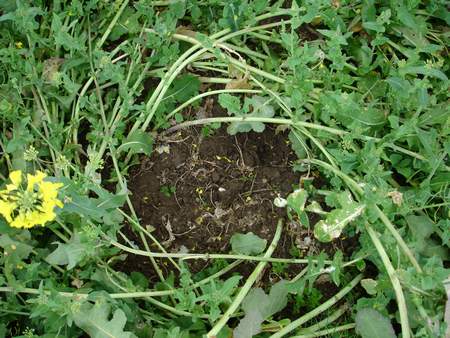
Surrounding this central patch of bare earth, the stems were bent over a few inches from the ground, forming a tight clockwise circle. The stems were undamaged at this point. At the edge of the circle, there were some interesting layering effects. The edge of the circle itself was clean cut, with no stems flowing out towards the beginning of the spiral pathway, as can often be seen. The beginning of the pathway appeared to have been laid first, as the clockwise direction flowed underneath what seemed to have been a thin ícurtainí of standing crop, which had subsequently been laid over the top, from the edge of the circle towards the outer edge of the pathway. 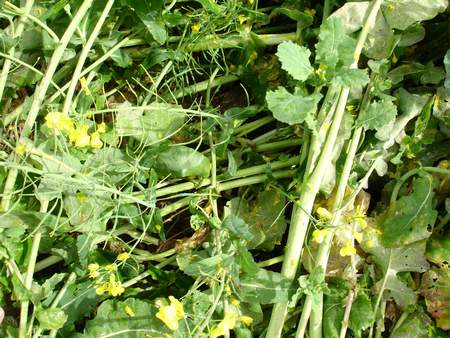
This was as far as I got before the weather descended. I am no fan of electrical storms at the best of times, rubber wellies or not, and the prospect of standing on the top of a hill clutching a 30ft length of carbon was enough to bring my measuring and photographing to a premature end. In short, I legged it! Getting lost again as I hurriedly made my way back to the overgrown tramlines didnít help, and I ended up crawling rather more quickly back through them than I had done on the way in, and not because I was going downhill either! All in all a memorable trip, and Iím sure the last one of the season into oilseed rape! Having analysed the few photos I did manage to take on the way to the crop circle, and while I was in there, one final point of interest has arisen. In two of the photos (shown below) there appear to be some unusual white spots. The crop was blowing about severely in the high winds and there were some petals flying around, but the shapes in these two photos look different from these, both appear too far in the distance to be such small objects as petals. 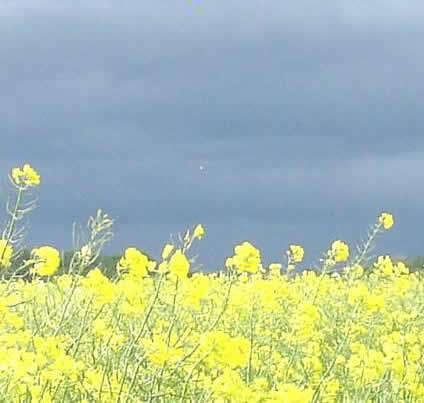
Mysterious light phenomena or petals blowing in the wind, you decide! 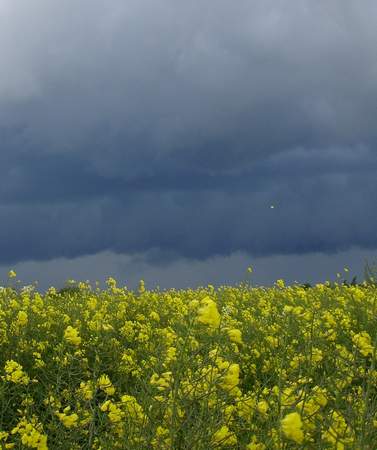
Crop Circle Summary
Alternative Websites |

